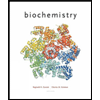
What is
To review:
Metabolism and the difference between anabolism and catabolism.
Introduction:
The food that an individual take contains glucose and that is broken down by a mechanism called glycolysis to generate ATP (adenosine triphosphate). Carbohydrates, the main source of energy, lipids, and proteins that are found in the food are digested via different enzymes as well as then absorbed in the small intestine. These sum total of all the chemical reactions that take place in the body of an organism comes under metabolism.
Explanation of Solution
Metabolism means to the series of chemical reactions, which takes place in the body of an individual. The intermediate products of the chemical reactions are known as metabolites. Metabolism fulfills two main requirements, which includes the energy generation and biological molecule synthesis. Metabolism consists of several enzymatic reactions that are organized into discrete pathways. These pathways are called metabolic pathways.
Metabolism is divided into catabolism, which means the breakdown of complex organic compounds into simpler molecules; whereas, anabolism means the formation of large organic molecules from simpler molecules.
The differences between catabolism and anabolism are given below:
| Catabolism | Anabolism |
| Catabolism is the destructive phase of metabolism. | Anabolism is the constructive phase of metabolism. |
| It is the metabolic process where large complex molecules are broken down into small and simpler molecules. | It is the metabolic process where simple substances are synthesized into complex molecules. |
| It is an exergonic process and releases ATP. | It is an endergonic reaction and requires ATP. |
| This type of metabolic reaction requires oxygen. | This type of metabolic reaction does not utilize oxygen. |
| Potential energy is converted into kinetic energy. It occurs during cellular respiration, digestion, and excretion. | Kinetic energy is converted into potential energy. It occurs during photosynthesis in plants, protein synthesis, and glycogen synthesis. |
Thus, metabolism comprises all the chemical reaction that occurs in the body. In catabolism, the complex organic molecules are converted into simpler molecules, whereas in anabolism, the simpler molecules form the functional and structural components of the body.
Want to see more full solutions like this?
Chapter 25 Solutions
Principles of Anatomy and Physiology
Additional Science Textbook Solutions
Biological Science (6th Edition)
Microbiology with Diseases by Body System (5th Edition)
MARINE BIOLOGY
Genetics: Analysis and Principles
Microbiology Fundamentals: A Clinical Approach
- How do enzymes work? What is catalase? Explain how the catalase activity is measured.arrow_forwardWhat is meant by intermediary metabolism?arrow_forwardWhat is metabolism, and how are different types of energy useful for metabolism? Explain the three main uses of metabolic energy. Give examples.arrow_forward
 BiochemistryBiochemistryISBN:9781305577206Author:Reginald H. Garrett, Charles M. GrishamPublisher:Cengage Learning
BiochemistryBiochemistryISBN:9781305577206Author:Reginald H. Garrett, Charles M. GrishamPublisher:Cengage Learning
